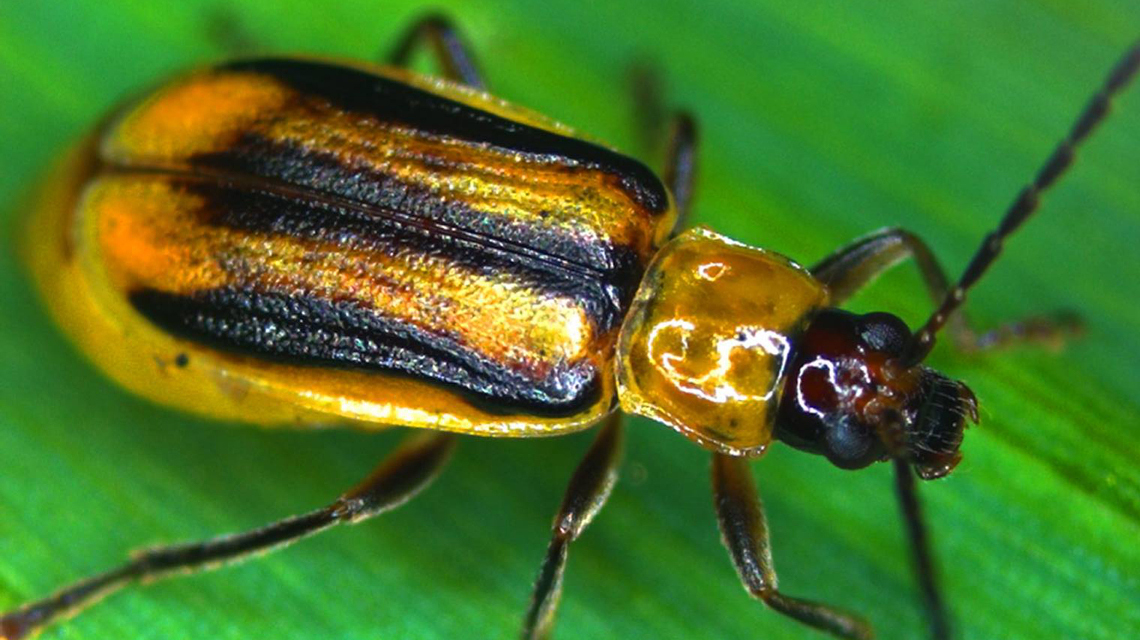Maize pest turns plant defense on its head
Researchers in Jena found out why the corn rootworm is such a devastating pest: it exploits the plants defenses and then uses it against potential enemies.

The western corn rootworm (Diabrotica virgifera virgifera) is a devastating pest of maize plants, which has spread throughout Europe. This year’s pest monitoring in Germany revealed that the number of beetles caught in traps has again multiplied in comparison to the previous year. Several attempts to target this crop pest biologically by applying entomopathogenic nematodes have failed. The resistance of the rootworm can now be explained by his defense strategy: Researchers from the University of Bern, Switzerland, and the Max Planck Institute for Chemical Ecology in Jena found out that the rootworm larvae are able to sequester plant defense compounds from maize roots in a non-toxic form and can activate the toxins whenever they need them to protect themselves against their own enemies. Their findings are published in the journal “eLife”.
Rootworm stores poison and uses it against nematodes
The corn rootworm originates from Central America, from where it spread invasively throughout North America since the 1950s. Agricultural authorities in the US estimate that the western corn rootworm causes damage worth billions of dollars each year.
Maize plants store defense compounds known as benzoxazinoids in their roots in a non-toxic form. If herbivores attack the plants, these molecules rapidly break down into compounds that are toxic for most insects. “We were able to show that the western corn rootworm stabilizes a toxic benzoxazinoid by adding a sugar molecule. This modified molecule is used directly to keep nematodes, used as a biological control, away”, explains first and lead author Christelle Robert. In addition the researchers were able to show that rootworms can stabilize a second plant-derived benzoxazinoid, sequester its non-toxic form in their bodies, and activate only when necessary – for instance upon nematode attack. Hence, the rootworm uses a double strategy to utilize plant defenses for its own protection.
Nematodes cannot stop the rootworms
Biological control with nematodes once seemed a promising alternative to the use of chemical pesticides. Previous studies found that maize roots emit (E)-beta-caryophyllene to attract beneficial nematodes. “Unfortunately, the nematodes often did not reduce Diabrotica populations very much, but it was not clear why this was the case. The rootworm is just too well protected with the plant’s own defenses”, says Jonathan Gershenzon from the Max Planck Institute for Chemical Ecology.
The scientists are now planning to identify the genes or enzymes, which enable the rootworms to outsmart maize defenses in order to ensure their own survival. If these genes can be silenced, it is possible that the rootworms will become susceptible to nematode infection.
jmr


